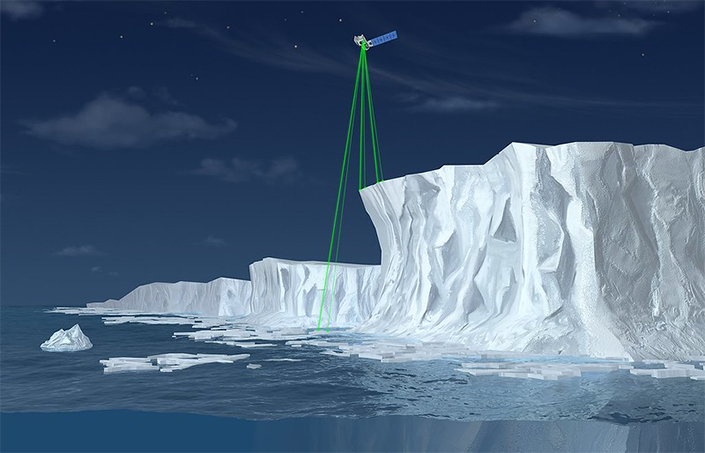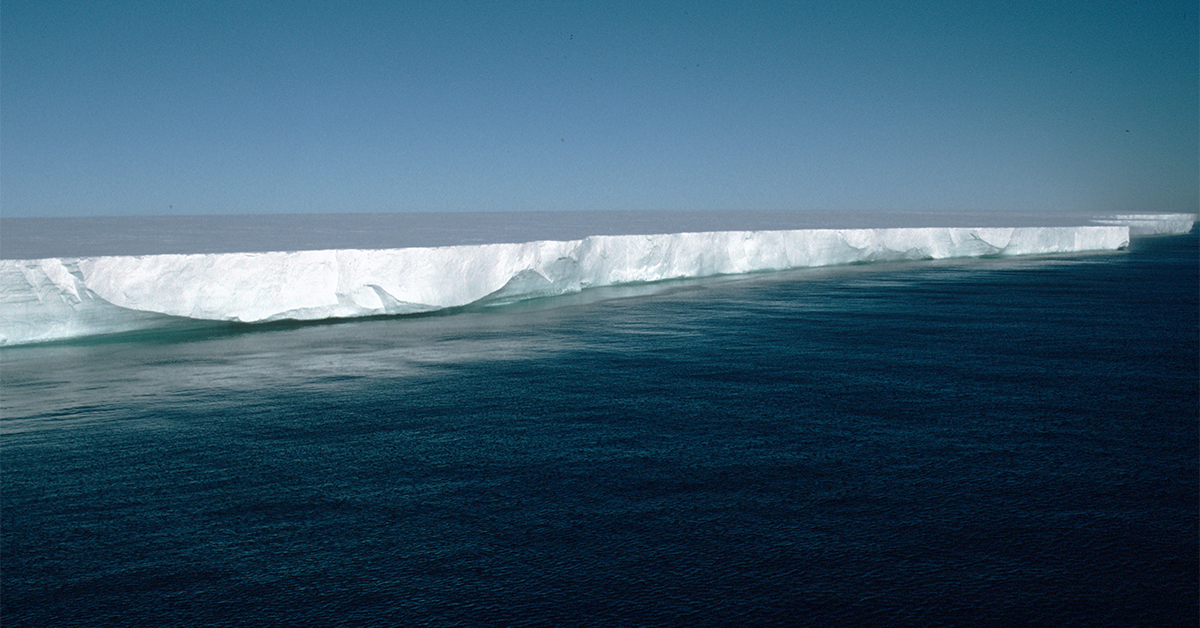Antarctica’s Floating Boundary Moves up to Nine Miles with the Tide
Satellite reveals back-and-forth movement of the boundary between Antarctica’s grounded ice sheet and floating ice shelf
Story by:
Published Date
Story by:
Topics covered:
Share This:
Article Content
An international study co-authored by Scripps Institution of Oceanography at UC San Diego has created a detailed record of the grounding line location of the southern Ronne Ice Shelf in Antarctica, showing that it moves up to 15 kilometers (nine miles) with the changing tide.
Published Sept. 26 in The Cryosphere, the research uses ICESat-2 satellite observations to provide new insights into ice sheet dynamics at a critical boundary where it meets the ocean, with implications for predicting Antarctica’s response to climate change and how much global sea levels will rise.
“We typically think of ice sheet change as being very slow, taking place over decades, centuries or even millennia,” said lead author Bryony Freer, a student researcher and glaciologist at the British Antarctic Survey and Centre for Satellite Data in Environmental Science (SENSE CDT) at the University of Leeds. “Our findings highlight that there are some processes operating over much shorter time periods — minutes to hours — that may have significant impacts on ice sheet dynamics.”
The location of Antarctica’s grounding line — the boundary between the grounded part of the ice sheet and the floating ice shelf — helps indicate ice stability. During a rising tide, extra buoyancy lifts more of the ice shelf off the seabed and the grounding line temporarily moves inland. It returns to its seaward position at low tide.
Grounding line movement has been mapped before with earlier satellite missions, but the observations were restricted to small regions and short timescales. In the new study, the researchers monitored a large chunk of the Ronne Ice Shelf for nearly five years.
Using lasers bounced off the ice from NASA’s Ice, Cloud and land Elevation (ICESat-2) satellite, the team could measure to within a few centimeters the height of the ice surface and how it rose and sank with daily tides. They used this information to calculate the changing position of the grounding line.
The study was co-authored by Helen Amanda Fricker, a Scripps Oceanography glaciologist and ICESat-2 science team leader. For more than a decade, she has served as a member of NASA’s Science Definition Team, contributing to the success of the satellite’s launch. The data provided by ICESat-2 over the past five years have proven to be invaluable for understanding changes to the Antarctic region.
“This work showcases how the unprecedented sampling in both space and time of ICESat-2 can reveal new information about dynamic features on ice shelves,” said Fricker. “It is critical that we continue to improve these measurements with future missions.”
The 15-kilometer (nine-mile) shift in the grounding line position between high and low tide described in the new paper is one of the largest observed anywhere in Antarctica. It shows the grounding line can move more than 30 kilometers (18 miles) per hour, flushing ocean water several kilometers further inland under the ice sheet.
This exposure to seawater could help the ice melt more quickly from below. In less stable regions, such as the Thwaites Glacier, this process is known to have driven long-term historic grounding line retreat.
How much the grounding line moves depends on the tidal range, the shape of the seafloor, and the strength of the ice. In some locations, there was a clear linear relationship between the change in tide height and the distance that the grounding line migrated. Elsewhere, there were much larger migrations at higher tides compared to lower tides.
The researchers were surprised to find that in some regions, the grounding line moved inland much faster during a rising tide compared to its seaward return as the tide falls. They suggest that water may become trapped under the ice as the grounding line retreats and takes longer to be flushed out, perhaps affecting the rate at which the ice sheet melts from below.
These findings demonstrate the need to account for this short-term movement in response to tides to accurately measure longer-term change, and also illuminate a process that is missing from models.
“It’s vital that through improving both our observations and modeling of these tidal processes, we can better understand how they operate and work out the likely implications for long-term ice sheet change,” said Freer.
The researchers recommend that any future satellite-derived measurements of grounding line position should be time-stamped to the nearest hour, along with tide height and phase. They also hope to scale up this analysis across more of Antarctica.
In addition to Freer and Fricker, the study was co-authored by Oliver Marsh of the British Antarctic Survey, Anna E. Hogg of the University of Leeds, and Laurie Padman of Earth and Space Research. Co-authors received funding from the Natural Environment Research Council, the National Aeronautics and Space Administration (NASA), and the European Space Agency (ESA).
– Adapted from the British Antarctic Survey
Learn more about research and education at UC San Diego in: Climate Change

You May Also Like
Stay in the Know
Keep up with all the latest from UC San Diego. Subscribe to the newsletter today.




